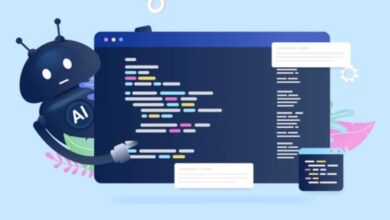Twilio’s Autopilot lets developers deploy bots across text, message, and AI assistants
Twilio wants to bring artificial intelligence (AI) to contact call centers. During its annual Signal developer conference in San Francisco, the company took the wraps off of Autopilot, a natural language service that enables developers to build conversational phone, text message, and voice bots that work seamlessly together.
Autopilot is available starting this week in public beta in the Twilio console.
“The challenge is building great self-service experiences that are conversational and feel natural,” Nico Acosta, director of product and engineering at Twilio, told VentureBeat in a phone interview. “However, until now, the tools available for building machine learning powered conversational experiences [were] too complex and [had] not been optimized for developers, which led to poor customer experiences. We built Autopilot to fill this gap in the market.”
Autopilot, which Acosta described as a conversational AI platform that “bridges the gap” between AI bots and business logic, is unique in its scalability. It works across interactive voice response (IVR) systems, SMS, chat, Amazon’s Alexa platform, Slack, and the Google Assistant, and boasts robust conversational and error handling logic that handles handoffs to contact center agents.
It’s capable of carrying over the context of conversations — including names, account numbers, and other personal info — and can be programmed to gather and respond to frequently asked questions. On the developer side of the equation, AutoPilot offers style sheets that let developers select the tone of voice and language of the bot, and track its errors and successes over time.
Autopilot isn’t the first of its kind to market. Just this summer, Google unveiled Contact Center AI, a machine learning-powered automated service that interacts with callers over the phone (and hands them off to a human agent if necessary). And Amazon’s Lex — which uses the same technology that powers Alexa — can recognize the intent of callers, ask follow-up questions, and dynamically adjust its responses based on the conversation.
But according to Acosta, flexibility is Autopilot’s secret sauce. “It lets you deploy those experiences where your customers are,” he said, “and build your own interactions. It’s a complete solution.”
The launch of Autopilot follows a recent Gartner study forecasting that by 2021, 15 percent of all customer service interactions will be completely handled by AI — an increase of 400 percent from 2017. And it comes a day after Twilio acquired SendGrid, an email technology firm that automates text and web messaging, in an all-stock deal valued at $2 billion.
There’s a reason chatbots, email bots, and voice assistants are all the rage. A majority of people — as many as 69 percent, according to a Salesforce survey — prefer chatbots to humans for quick exchanges with brands. That’s one of the reasons 77 percent of after-sales and customer service teams have implemented or plan to implement customer service bots, and why the global chatbot market is expected to reach $1.25 billion by 2025.
Twilio’s Autopilot is, if nothing else, definitely on trend.
Twilio Pay
Autopilot wasn’t the only thing Twilio announced at Signal today. It announced the general availability of Flex, its contact center platform, and also debuted Pay, an API that allows developers to process credit card transactions securely over the phone. Pay will be available as a widget within Twilio Studio, a drag-and-drop voice interaction design workflow, starting this week, with Stripe as the initial launch partner.
Pay starts at $0.10 per transaction, and will be broadly available next year.
Pay is a prompt-based system: When a customer’s on the line with a contact center agent and ready to complete a transaction, Pay steps in automatically, instructing customers to enter their credit card information. It automatically pauses call recordings when Pay is activated, and resumes the recording once the transaction’s been completed.
Pay is customizable — companies can specify the language of prompts, voice menus, and accepted credit card types. And importantly, it’s compliant with the Payment Card Industry Data Security Standard (PCI DSS), which requires companies that transmit and store credit card information to implement encryption and submit to regular audits.
In the future, Twilio says that developers will be able to add additional payment providers through an interface within the Twilio dashboard.
Twilio, which is headquartered in San Francisco with offices in New York, Atlanta, and Mountain View, California, has more than 1,000 employees. It posted 54 percent sales growth in Q2 2018 and raised its full-year 2018 revenue outlook by $46.5 million to a range of $585.5 million to $589.5 million, beating analysts’ expectations.
Source: VentureBeat
To Read Our Daily News Updates, Please Visit Inventiva Or Subscribe Our Newsletter & Push.




